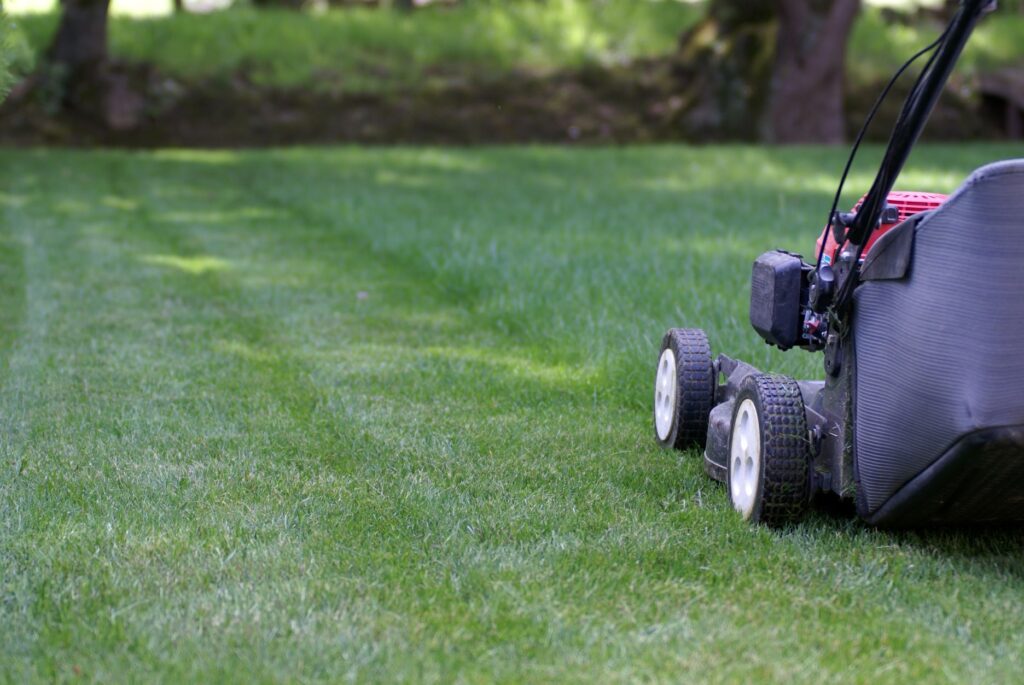As the grip of winter loosens and the first signs of spring emerge, the sight of your burgeoning lawn might have you itching to start the mowing season. But, hold off on revving up that lawnmower just yet. The timing of your lawn’s first cut of the year is more crucial than you might think, playing a pivotal role in its health and vitality.

Understanding your lawn’s needs
Your lawn is more than just a patch of greenery; it’s a living, breathing ecosystem that requires careful attention to thrive. The golden rule for the inaugural mow of the season is to wait until your lawn is actively growing. This typically happens when soil temperatures consistently hit 10°C (50°F). Mowing before your lawn has fully awakened from its winter slumber can stress the grass, leaving it vulnerable to diseases and invasive weeds.
Observing your garden
Before you consider starting your lawnmower, take a moment to observe your lawn. Signs of active growth, such as grass beginning to grow and display vibrant green hues, are indicators that it might be time. Additionally, ensure the soil is sufficiently dry to avoid damaging the soil structure and the roots. Mowing on wet soil can compact the ground and harm the grassroots, leading to long-term health issues for your lawn.
The importance of mowing height
When you do decide it’s time for that first mow, be mindful of how short you cut the grass. During the first mow of the season, it’s advisable to leave the grass taller, aiming for a height of at least 5 cm (about 2 inches). This encourages the development of a healthy, robust lawn. Taller grass not only helps to suppress weed growth but also retains soil moisture more effectively, fostering a more resilient garden.
Additional considerations
- Equipment check: Before you embark on the first mow, ensure your mower is in tip-top shape. This means sharp blades for a clean cut, which is less traumatic for the grass and helps prevent disease. If you’re using a gas-powered mower, checking the oil and considering a change every two years is beneficial for optimal performance.
- Mowing frequency: After the initial cut, maintaining a regular mowing schedule that adapts to the growth rate of your grass is crucial. As the season progresses and temperatures rise, you might find your lawn requires more frequent mowing. Adapting to these changes and avoiding cutting more than one-third of the grass blade length in a single mow will promote a healthier lawn.
Conclusion
The first mow of the year sets the tone for the health and appearance of your lawn throughout the growing season. By waiting for the right moment when your lawn shows signs of active growth and ensuring your equipment is prepared, you can kick off your lawn care routine on the right foot. Remember, a little patience in the early days of spring can lead to a lush, vibrant lawn that’s the envy of the neighborhood. Regular maintenance, proper mowing techniques, and a bit of TLC will keep your garden in prime condition, ready to enjoy all summer long.
Timing your lawn’s first cut of the year is a simple yet essential practice that reaps significant rewards. By following these guidelines, you’ll ensure your lawn remains healthy, green, and full of life, serving as a testament to your dedication and care. So, watch for those signs of growth, prepare your mower, and get ready to enjoy the beauty of a well-kept lawn.

 Open Immovlan
Open Immovlan